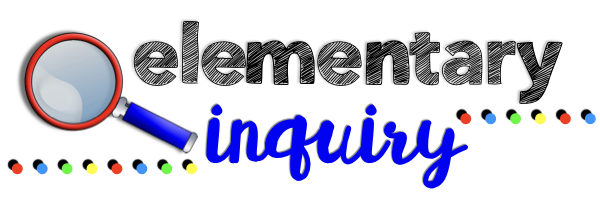STEM or STEAM… or STREAM… there are so many variations on the acronyms or names used to describe the integration of content areas in education! I’ve got a rundown of must-know STEM vocabulary words for teachers, where I define each of these acronyms.

When I first started focusing on STEM within the curriculum I was teaching, I quickly shifted to using STEAM to describe my approach. Here are a few reasons why I prefer STEAM vs. STEM:
1. STEM has become a commonplace term.
Too often, it is used in reference to any project made with recycled materials or any work done with a computer or tablet. STEM or STEAM are much more than that. Since STEAM is the less common term, I think that perhaps it forces people to think a bit more deeply about how it applies across all content areas in education.
2. STEAM emphasizes the integration of content areas.
Of course STEM is also all about connections among related disciplines, but the A for Arts adds another important layer to understanding our complex world.
3. Art and creativity are integral to STEM or STEAM fields, and vice versa.
I would wager that all STEM professionals use some form of creativity in their work, just as many artists utilize science or technology:
- Architects and engineers balance forces of physics with innovative aesthetics.
- Software engineers and website designers work together to build efficient technologies with a pleasant user experience.
- Photographers, landscapers, glassblowers, and musicians are just a few examples of artists who are also experts in the scientific concepts foundational to their work.
4. The arts bring the vital element of humanity to STEM or STEAM work.
People aren’t robots. We like form AND function! Creative reasoning and artistic thinking are needed to address complicated problems that arise from our complex society.
5. The Arts include fine arts, liberal arts, and language arts.
STEM and STEAM provide authentic opportunities to practice reading, writing, and oral communication. (That’s also why I think the R in STREAM is redundant when it stands for Reading.)
Further Reading
There are many others who have written about the STEM or STEAM debate. Here are a few articles that I really like; these authors explain (much more eloquently than I have) the connection between science and the arts and make the argument for using STEAM instead of STEM in education.
What is STEAM Education?
STEAM is a way to take the benefits of STEM and complete the package by integrating these principles in and through the arts. STEAM takes STEM to the next level: it allows students to connect their learning in these critical areas together with arts practices, elements, design principles, and standards to provide the whole pallet of learning at their disposal. STEAM removes limitations and replaces them with wonder, critique, inquiry, and innovation.
Institute for Arts Integration and STEAM
Artists and Scientists: More Alike Than Different
Artists and scientists tend to approach problems with a similar open-mindedness and inquisitiveness — they both do not fear the unknown, preferring leaps to incremental steps. They make natural partners.
John Maeda, Scientific American
When STEM Becomes STEAM, We Can Change The Game
When we start to look, natural overlaps and places of connection between the arts and STEM are everywhere – and always have been. As Dr. Jenny Nash, Head of the Education Solutions Design Team at LEGO Education, told me, “A baker uses chemistry. A chemist develops the makeup, and a computer animator designs the on-screen special effects used in the blockbuster movies we see in theaters. Experiencing STEAM subjects in an integrated way is more authentic and representative of the world we’re preparing students to enter.”
Talia, Milgrom-Elcott, Forbes
I would LOVE to know: Do you STEM or STEAM? Or something else? Let me know in the comments!



